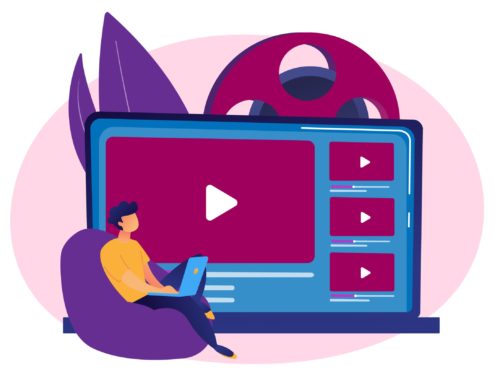Video ads are all the rage these days and for good reason. These ads give you more time and space to get creative and establish your brand image. They also allow you the freedom to elaborate on the features of your products or services. Display Ads are great for getting your point across in a clear, concise manner and getting views interested in your brand. However, video ads allow viewers to get to know your brand better.
Simply using video ads to promote your products or services is far from enough, though. You need to decide on what kind of content you’re going to feature and the quality of this content as well. This aside, the most important consideration concerning video ads is the platform you’ll be featuring these on. Should you go with YouTube or social media giants such as Facebook and Instagram?
Think about it: when was the last time you logged on to any of these three websites and spent more than a couple of minutes there before being bombarded with ads? And did all the ads across all three platforms feature similar content? If you’ve thought about it hard enough, you’d probably have realized that the kind of ads featured on these three platforms vastly differs from one to the other.
Ads on Facebook are quite similar to those on Instagram. However, ads on both Facebook and Instagram are very different from those on YouTube. In other words, social media ads don’t have much in common with YouTube ads. Video ads on YouTube have been around for a long, long time. Think of them as the dinosaurs of video ads and Influencer Marketing on Instagram as the humans – that’s how far apart they are in the world of Digital Advertising.
The decision on whether you should opt for YouTube or social media to run your video ads relies on several factors such as duration, video size, product advertised, etc. Technical factors such as the captions on videos and sound quality also play a big role in determining which platform would suit your advertising needs perfectly here. Let’s start with the products or services being advertised.
If you’re a small brand that produces skincare products or apparel, your best bet would be to run your video ads on Instagram. Why? Well, for one you could hire an influencer or micro-influencer to create the ad for you and run it on their Instagram page. This saves you the trouble of designing an ad yourself and kills two birds with one stone: hiring a creator and marketer for your ad.
The rise of Influencer Marketing has given small brands the chance to reach out to tens or even hundreds of thousands of people that use Instagram. Using this mode of marketing often works out cheaper than running ads on YouTube and can allow you to relate to younger users on the platform.
If, however, you don’t want to hire an influencer and would like to run a traditional video ad instead, you could do that on Facebook or Instagram too. These ads either appear on Facebook/Instagram stories or as posts on your social media pages. The ideal length for an ad featured on these platforms is no more than 15-30 seconds. The average viewer won’t watch an ad with interest for more than 15 seconds anyway so to hit the 30-second mark, your ad will have to be truly creative.
Moreover, you’ll have to bear in mind that ads on Facebook and Instagram are muted by default. Therefore, it’s always a good idea to add captions to your video ads on these platforms. If you’d like to extend your reach beyond Facebook and Instagram and want to check out Snapchat as well, know that the average ad on this platform runs for a maximum of 10 seconds. If you think you can condense enough useful information or capture a user’s attention within this time frame, you can go ahead and appeal to the young audience that uses Snapchat.
Now that we’ve spoken about social media, let’s talk about YouTube. The ideal length for a YouTube video ad is 12 seconds to 3 minutes, which makes it more flexible than social media platforms. After all, Facebook, Instagram, and Snapchat thrive on written content and images whereas YouTube primarily deals with videos. Therefore, it makes sense that an audience on YouTube is more willing to watch a long video ad than an audience on Instagram.
Like Snapchat, the audio on YouTube is on by default as well, so you needn’t turn on captions here. One of the best features of YouTube ads is that they allow you to choose where you’d like to place your ad in a video. You could either run your ad at the start of the video, in the middle of a video (if it’s a long video), or at the end of the video. Additionally, you can add the ‘skip’ button to your ads (and you should!) or compel users to watch it in its entirety before they start or resume watching a YouTube video.
At the end of the day, your choice of platform is not a decision you can make overnight. Big brands choose to run their video ads on both social media and on YouTube, but this is not a practical idea for smaller brands with tighter advertising budgets. Regardless of which platform you choose, your focus should be on increasing your conversion rate. You could always test your ads on different mediums to understand what works best for your brand and take it from there.





